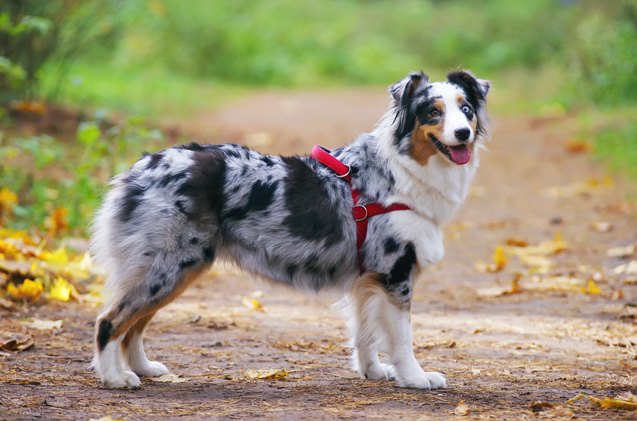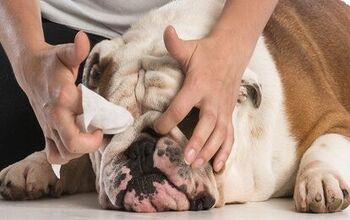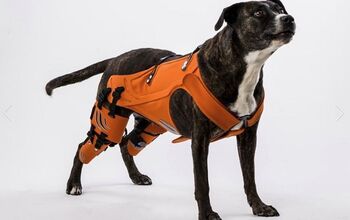How to Properly Fit Your Dog for a Harness


Taking your dog for his daily walk is one of your most important tasks as a dog owner. Before you leash up, take a moment to think about whether your dog might do better with a harness than with a traditional collar. Keep reading to learn more about the benefits of dog harnesses and how to properly fit your dog for one.
Dog collars come in a wide variety of different styles, so you can choose the one that is right for your dog. Traditional nylon collars are inexpensive, and they come in many sizes, though you might prefer a more stylish option like leather. Martingale collars are great for dogs who have a tendency to slip out of their collars and choke collars are sometimes a good option for dogs who need frequent correction.
Related: The Collar Vs. Harness Debate
The problem with all of these options is that they can put a lot of strain on your dog’s neck and that puts him at risk for neck and airway injuries. A harness provides many benefits over a traditional collar. For one thing, they distribute force across your dog’s chest and back instead of concentrating it around his neck. A harness gives you greater control over your dog, a benefit that is important with larger and stronger breeds. Harnesses also discourage your dog from pulling which is a benefit when you’re leash training a puppy.
There are many reasons to choose a harness over a traditional collar. If you decide to make the switch, don’t just purchase the first harness you see at the pet store – take the time to try out some different options and make sure that the harness is properly fitted by following these steps:
- Take the measurement around your dog’s chest. Start at the bottom of the rib cage then go up and over the back and down to the starting point.
- Measure the girth around your dog’s neck, measuring at the thickest part just on top of his shoulders – this is a little wider than the part of the neck where he would normally wear his collar.
- Weigh your dog and combine that number with your measurements to determine the right size harness.
Related: Best 10 Harnesses For Morkies
With these three numbers in hand, you can head to the pet store to try on a few different options or you can shop online. Keep in mind that sizes will differ from one brand to another, so rely on your measurements instead of size options like “small” or “large.” Know that most harnesses will offer some adjustability, but you should still choose the one that is closest to your dog’s size.
If you’re worried about putting excess strain on your dog’s neck, consider switching to a harness. Many dog owners find it to be a safer and preferable option, plus your dog will probably prefer it as well. If you do make the switch, just be sure you fit it properly.

Kate Barrington is the loving owner of two cats (Bagel and Munchkin) and a noisy herd of guinea pigs. Having grown up with golden retrievers, Kate has a great deal of experience with dogs but labels herself a lover of all pets. Having received a Bachelor's degree in English, Kate has combined her love for pets and her passion for writing to create her own freelance writing business, specializing in the pet niche.
More by Kate Barrington























